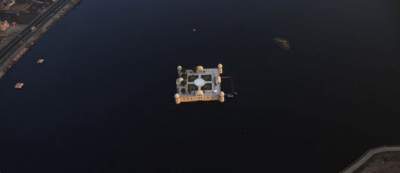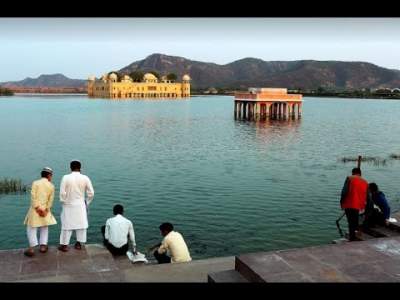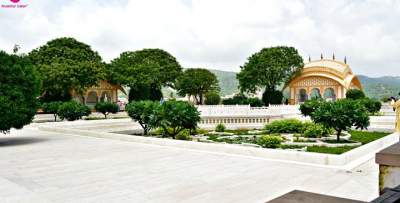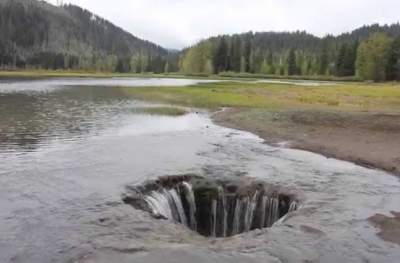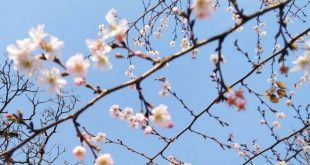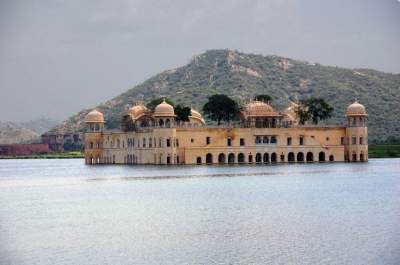 It is a miracle of India.
It is a miracle of India.
Beautiful JAL-Mal immersed in water of an artificial lake in pink city Jaipur in the Indian state of Rajasthan. For this reason it is also called the “Water Palace”. About its history is not known to many, except that JAL Mahal was built by Maharajah Madho Singh in the 18th century. The exact date of construction is also unknown. A few decades later the son of the Maharajah Madho Singh II increased the Palace, adding a courtyard. Then the Palace was abandoned — it was abandoned for two centuries until the recent reconstruction in 2000.

JAL Mahal is a very curious structure. It cannot be called a classic, because inside there are no habitable rooms. There are just gardens and terraces, where the Maharajah made a leisurely stroll. The Palace actually has five floors high, but only the top floor is above the water level. The first four levels are often flooded when the lake filled with water.

As the legendary Taj Mahal, the JAL Mahal is a mix of various architectural styles such as Rajput and Mughal, which are quite common in Rajasthan. The architecture is inspired by the traditional Hindu Rajput architecture, while the Mughal architecture is heavily influenced by Islamic and Persian styles. The more surprising the mix of these two styles in a single complex JAL Mahal. Hallways and large rooms on the first floor is exquisitely decorated with beautiful paintings. On the terrace in the Palace a garden with arched passages. In each corner of this Palace installed an octagonal tower with a graceful domes. In the middle of the terrace located a rectangular pavilion Chatri in Bengali style.

Artificial lake man Sagar, in the middle of which is JAL Mahal, was established in 1610 by Raj man Singh in response to famine and severe water shortage that has engulfed his state in the end of the previous century. To prevent drought, Raja man Singh ordered the construction of a dam on the river, Darmawati, along with the reservoir of man Sagar lake for potable water storage. For many decades, the lake has provided the residents of the region’s precious water for drinking and irrigation.

But in the last century the situation has changed — the lake became a dumping ground for garbage, raw sewage and other industrial waste. Dirty water and the stench drove people away from this once magnificent monument.
In 2004, a private company bought the land, including the lake and the JAL Mahal with the intention to turn it into a resort and tourist attraction of India. During the past decade, the company was engaged in cleaning the lake and restoration of the Palace that managed to embody fully. Water quality has improved, has returned nesting birds here. JAL Mahal is still closed to tourists, although You can enjoy the view of the Palace, walking around the lake by boat.
